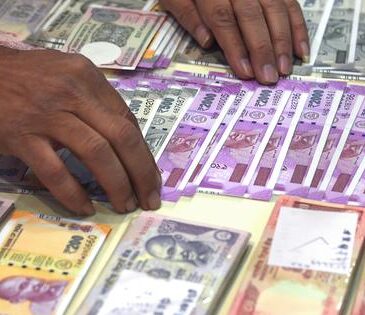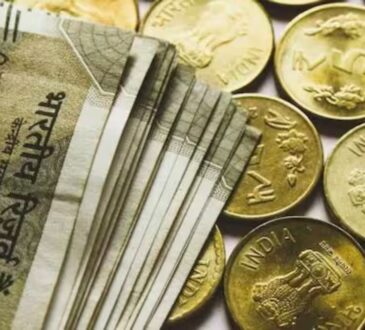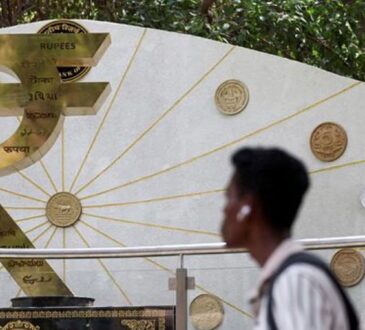- EUR/USD retreats to the 1.1400 region after closing in positive territory on Monday.
- Markets await key macroeconomic data releases from the US.
- The technical outlook doesn’t point to a buildup of bullish momentum.
Following a quiet start to the week, EUR/USD gained traction and closed in positive territory above 1.1420 on Monday. The pair corrects lower in the European session on Tuesday and trades at around 1.1400.
Euro PRICE This week
The table below shows the percentage change of Euro (EUR) against listed major currencies this week. Euro was the strongest against the US Dollar.
| USD | EUR | GBP | JPY | CAD | AUD | NZD | CHF | |
|---|---|---|---|---|---|---|---|---|
| USD | -0.39% | -0.76% | -0.88% | -0.36% | -0.51% | -0.32% | -0.79% | |
| EUR | 0.39% | -0.43% | -0.50% | 0.01% | -0.21% | 0.06% | -0.42% | |
| GBP | 0.76% | 0.43% | -0.06% | 0.46% | 0.20% | 0.49% | 0.02% | |
| JPY | 0.88% | 0.50% | 0.06% | 0.55% | 0.41% | -0.85% | 0.37% | |
| CAD | 0.36% | -0.01% | -0.46% | -0.55% | -0.27% | 0.04% | -0.42% | |
| AUD | 0.51% | 0.21% | -0.20% | -0.41% | 0.27% | 0.29% | -0.21% | |
| NZD | 0.32% | -0.06% | -0.49% | 0.85% | -0.04% | -0.29% | -0.47% | |
| CHF | 0.79% | 0.42% | -0.02% | -0.37% | 0.42% | 0.21% | 0.47% |
The heat map shows percentage changes of major currencies against each other. The base currency is picked from the left column, while the quote currency is picked from the top row. For example, if you pick the Euro from the left column and move along the horizontal line to the US Dollar, the percentage change displayed in the box will represent EUR (base)/USD (quote).
The data from the US showed on Monday that the Federal Reserve Bank of Dallas’ Texas Manufacturing Business Index slumped to its weakest level in nearly five years at -35.8 in April from -16.3 in March. This reading revived fears over an economic downturn in the US and caused the US Dollar (USD) to weaken against its major rivals.
In the second half of the day on Tuesday, JOLTS Job Openings for March and the Conference Board’s Consumer Confidence Index data for April will be featured in the US economic docket.
A significant decrease in the number of job openings could be seen as a sign of worsening conditions in the labor market and weigh on the USD with the immediate reaction. On the flip side, a positive surprise, with a reading above 8 million, could support the currency and cause EUR/USD to stretch lower.
The CME FedWatch Tool currently shows that markets see a nearly 60% probability of a rate cut in June after the Federal Reserve (Fed) keeps policy settings unchanged in May. In case disappointing data releases from the US allow investors to lean toward a rate reduction in June, the market positioning suggests that the USD has room on the downside.
EUR/USD Technical Analysis

The Relative Strength Index (RSI) indicator on the 4-hour chart stays slightly above 50, suggesting that sellers remain reluctant to bet on an extended slide despite the recent pullback.
In case EUR/USD drops below 1.1390-1.1400 (50-period Simple Moving Average (SMA), Fibonacci 23.6% retracement of the latest uptrend) and confirms this area as resistance, technical sellers could take action. In this scenario, 1.1300 (100-period SMA) could be seen as next support before 1.1270 (Fibonacci 38.2% retracement).
On the upside, interim resistance seems to have formed at 1.1430 (static level) before 1.1500 (static level, round level).
Euro FAQs
The Euro is the currency for the 19 European Union countries that belong to the Eurozone. It is the second most heavily traded currency in the world behind the US Dollar. In 2022, it accounted for 31% of all foreign exchange transactions, with an average daily turnover of over $2.2 trillion a day.
EUR/USD is the most heavily traded currency pair in the world, accounting for an estimated 30% off all transactions, followed by EUR/JPY (4%), EUR/GBP (3%) and EUR/AUD (2%).
The European Central Bank (ECB) in Frankfurt, Germany, is the reserve bank for the Eurozone. The ECB sets interest rates and manages monetary policy.
The ECB’s primary mandate is to maintain price stability, which means either controlling inflation or stimulating growth. Its primary tool is the raising or lowering of interest rates. Relatively high interest rates – or the expectation of higher rates – will usually benefit the Euro and vice versa.
The ECB Governing Council makes monetary policy decisions at meetings held eight times a year. Decisions are made by heads of the Eurozone national banks and six permanent members, including the President of the ECB, Christine Lagarde.
Eurozone inflation data, measured by the Harmonized Index of Consumer Prices (HICP), is an important econometric for the Euro. If inflation rises more than expected, especially if above the ECB’s 2% target, it obliges the ECB to raise interest rates to bring it back under control.
Relatively high interest rates compared to its counterparts will usually benefit the Euro, as it makes the region more attractive as a place for global investors to park their money.
Data releases gauge the health of the economy and can impact on the Euro. Indicators such as GDP, Manufacturing and Services PMIs, employment, and consumer sentiment surveys can all influence the direction of the single currency.
A strong economy is good for the Euro. Not only does it attract more foreign investment but it may encourage the ECB to put up interest rates, which will directly strengthen the Euro. Otherwise, if economic data is weak, the Euro is likely to fall.
Economic data for the four largest economies in the euro area (Germany, France, Italy and Spain) are especially significant, as they account for 75% of the Eurozone’s economy.
Another significant data release for the Euro is the Trade Balance. This indicator measures the difference between what a country earns from its exports and what it spends on imports over a given period.
If a country produces highly sought after exports then its currency will gain in value purely from the extra demand created from foreign buyers seeking to purchase these goods. Therefore, a positive net Trade Balance strengthens a currency and vice versa for a negative balance.




